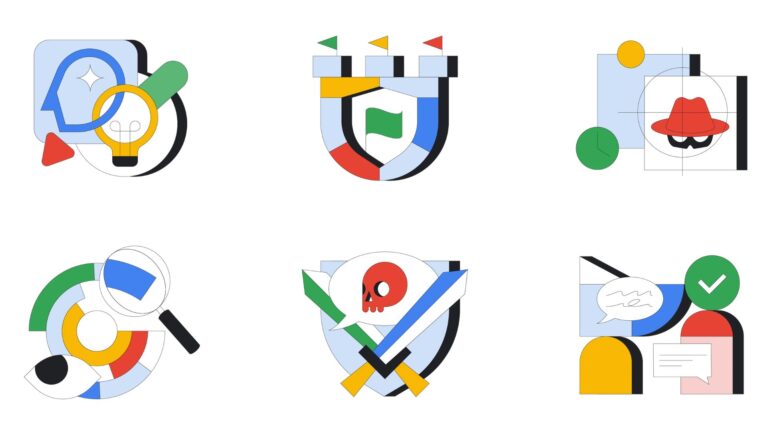TL;DR:
- Google has introduced the Secure AI Framework (SAIF) to establish industry security standards for AI systems.
- SAIF addresses risks such as model theft, data poisoning, malicious input injection, and extraction of confidential information.
- The framework consists of six core elements: expanding strong security foundations, extending detection and response, automating defenses, harmonizing platform-level controls, adapting controls for AI deployment, and contextualizing risks within business processes.
- SAIF aims to ensure secure and responsible AI implementation by leveraging existing infrastructure protections, monitoring AI inputs and outputs, automating defenses with AI, harmonizing control frameworks, adapting controls based on testing and feedback, and conducting end-to-end risk assessments.
- Google emphasizes collaboration with industry standards organizations and fosters a secure AI community through partnerships, workshops, and research programs.
- Adhering to frameworks like SAIF enables the industry to build and deploy AI systems responsibly, unlocking the full potential of AI technology.
Main AI News:
In a groundbreaking move, Google unveiled the Secure AI Framework (SAIF), a pioneering conceptual framework designed to establish robust security standards for the development and deployment of AI systems. Drawing inspiration from the best practices in software development, SAIF incorporates a profound understanding of the unique security risks associated with AI systems.
The introduction of SAIF marks a significant milestone in the quest for secure and responsible AI implementation. With the vast potential of AI technology, it is imperative for responsible actors to prioritize the safeguarding of these advancements. SAIF addresses critical risks such as model theft, data poisoning, malicious input injection, and extraction of confidential information from training data. As AI capabilities continue to integrate into products worldwide, adhering to a responsive framework like SAIF becomes paramount.
Comprising six core elements, SAIF offers a comprehensive approach to securing AI systems:
- Expand Strong Security Foundations to the AI Ecosystem By leveraging existing secure-by-default infrastructure protections and expertise, organizations can effectively shield AI systems, applications, and users. Staying abreast of AI advancements and adapting infrastructure protections accordingly is essential.
- Extend Detection and Response to Include AI in Threat Universe Timely detection and response to AI-related cyber incidents are of utmost importance. Organizations should monitor generative AI systems’ inputs and outputs to detect anomalies and utilize threat intelligence to proactively anticipate attacks. Collaborating with trust and safety, threat intelligence, and counter-abuse teams can bolster threat intelligence capabilities.
- Automate Defenses to Stay Ahead of Evolving Threats Leveraging the latest AI innovations can significantly enhance the scale and speed of response efforts against security incidents. As adversaries increasingly harness AI to amplify their impact, employing AI and its emerging capabilities is crucial for maintaining agility and cost-effectiveness in combating them.
- Harmonize Platform-Level Controls for Consistent Security Ensuring consistent security across the organization necessitates aligning control frameworks. Google extends secure-by-default protections to AI platforms, such as Vertex AI and Security AI Workbench, seamlessly integrating controls and safeguards into the software development lifecycle.
- Adapt Controls to Enhance AI Deployment Constant testing and continuous learning are pivotal in refining detection and protection capabilities to address the evolving threat landscape. Techniques like reinforcement learning based on incidents and user feedback can fine-tune models and bolster security. Regular red team exercises and safety assurance measures further augment the security of AI-powered products and capabilities.
- Contextualize AI System Risks within Business Processes Conducting end-to-end risk assessments empowers organizations to make informed decisions when deploying AI. Evaluating the overall business risk, including data lineage, validation, and operational behavior monitoring, is critical. Implementing automated checks to validate AI performance further reinforces security measures.
Google places great emphasis on building a secure AI community and has actively sought industry-wide support for SAIF. This involves forging partnerships with key contributors and engaging with prominent industry standards organizations, including NIST and ISO/IEC. Furthermore, Google collaborates directly with organizations, conducts workshops, shares insights from its threat intelligence teams, and expands bug hunter programs to incentivize research on AI safety and security.
Conclusion:
The introduction of the Secure AI Framework (SAIF) by Google marks a significant advancement in AI security. With SAIF, organizations now have a comprehensive conceptual framework that establishes industry security standards for building and deploying AI systems responsibly. By addressing critical security risks specific to AI and providing guidelines for securing AI technology, SAIF ensures that AI systems are secure by default.
This development has profound implications for the market, instilling confidence in businesses and users alike regarding the security and responsible implementation of AI. Organizations that adopt SAIF can mitigate risks such as model theft, data poisoning, and malicious attacks, paving the way for the widespread adoption of AI technology across various industries. With Google’s commitment to collaboration and knowledge sharing, the industry as a whole can foster a secure AI community and harness the transformative power of AI with confidence.

